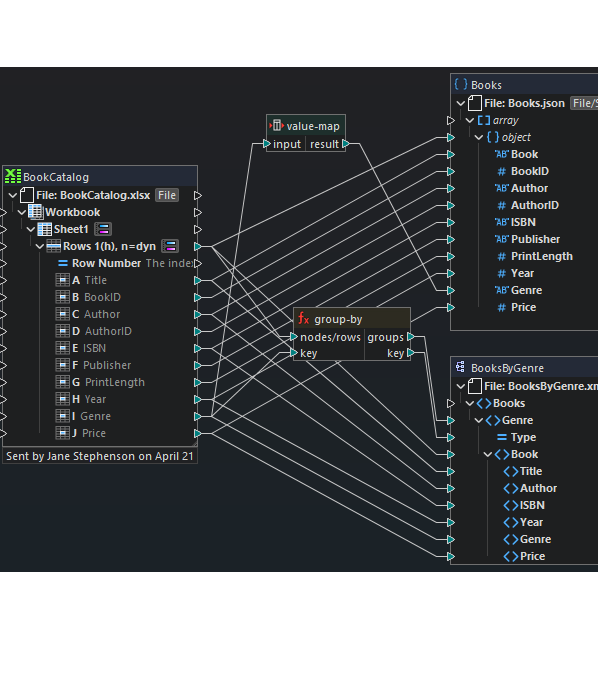MapForce makes it easy to define complex data integration, conversion, and ETL processes. The input and destination of a data mapping can be mixed formats, including any combination of XML, JSON, PDF, databases, flat files, EDI, Excel, XBRL, Shopify, etc. A data mapping project can have one input mapped to one output, one input to many outputs, many sources to one destination, or many sources to many destinations, all in different data formats, as shown in the example to the left where Excel data is mapped to JSON and XML files.
MapForce lets you integrate data from multiple files and data sources or split data from one source into many outputs. Multiple files can be specified through support for wildcard characters (e.g., ? or *) in filenames, a database table, auto-number sequences, or other methods. This feature is very useful in a wide variety of data integration scenarios; for example, it may be necessary to integrate data from a file collection or to generate individual XML files for each main table record in a large database.
MapForce also allows you to use file names as parameters in your data integration projects. This lets you create dynamic mappings in which specific file names are defined at run-time.



